What is Keyword Difficulty?
Keyword difficulty is a metric that measures the effort it would take for your content to rank on the first page of Google for a certain keyword. In other words, if a keyword is difficult, then it would require a lot of time and attention on your part to see results.
But what does that mean for keyword research? Should you only focus on search terms with low difficulty?
Not necessarily. When choosing what to target, a smart strategy considers both keyword difficulty and search volume. This way, you can build a strategy that balances opportunity with ease of ranking.
Below, we’ll explore the ins and outs of keyword difficulty: what it is, how to interpret it, and how to incorporate it into your strategy.
Why Is Keyword Difficulty Important to Understand?
Whether you’re aware of it or not, keyword difficulty impacts both your strategy and resource planning. If you understand it, you can target the most efficient keywords for your site and ensure your team has the support they need to create successful content.
For example, imagine that you choose “project management” as your blog’s next target keyword based on relevance and high search volume alone. You go ahead and assign it to one of your writers without thinking about difficulty at all.
Will your new article rank on the first page? Maybe, but you’d probably need to put a lot of support behind it first. If you don’t understand how difficult it is to rank on that keyword and why you might not know to do that.
In other words, keyword difficulty can help you determine how realistic your goal is to rank a new page. You can use that knowledge to map out your content plan and allocate resources to support it.
But how do you know how difficult a keyword is? A few different factors come into play, including:
- Competitors
- Content quality
- Search intent
- Backlinks
- Domain authority
We’ll cover each of those in more detail below.
Competitors
If you want to compete for that coveted number one search result, you first need to know who else is trying to win it. But the thing is, your competition might not be who you expect.
That’s where SEO competitive analysis comes in.
Generally, you’ll have three different types of competition to worry about:
- Your industry competitors: other companies selling similar products or services to a similar audience
- SEO competitors: other domains that write content for a similar audience and compete for a similar keyword profile
- Competitors for this keyword: Who is actually ranking, right now, for the exact keyword you want to target
In most cases, these three categories will overlap. After all, it’s likely that your industry competitors are also creating content and targeting an audience similar to yours. But it’s not guaranteed.
If you’re not sure who your SEO competitors are, you can find out using the Market Explorer tool, which is part of .Trends. This will not only identify your top competitors in your market in terms of traffic—giving you a better idea of who to watch out for—but will also help you benchmark yourself and your rivals against overall market trends.
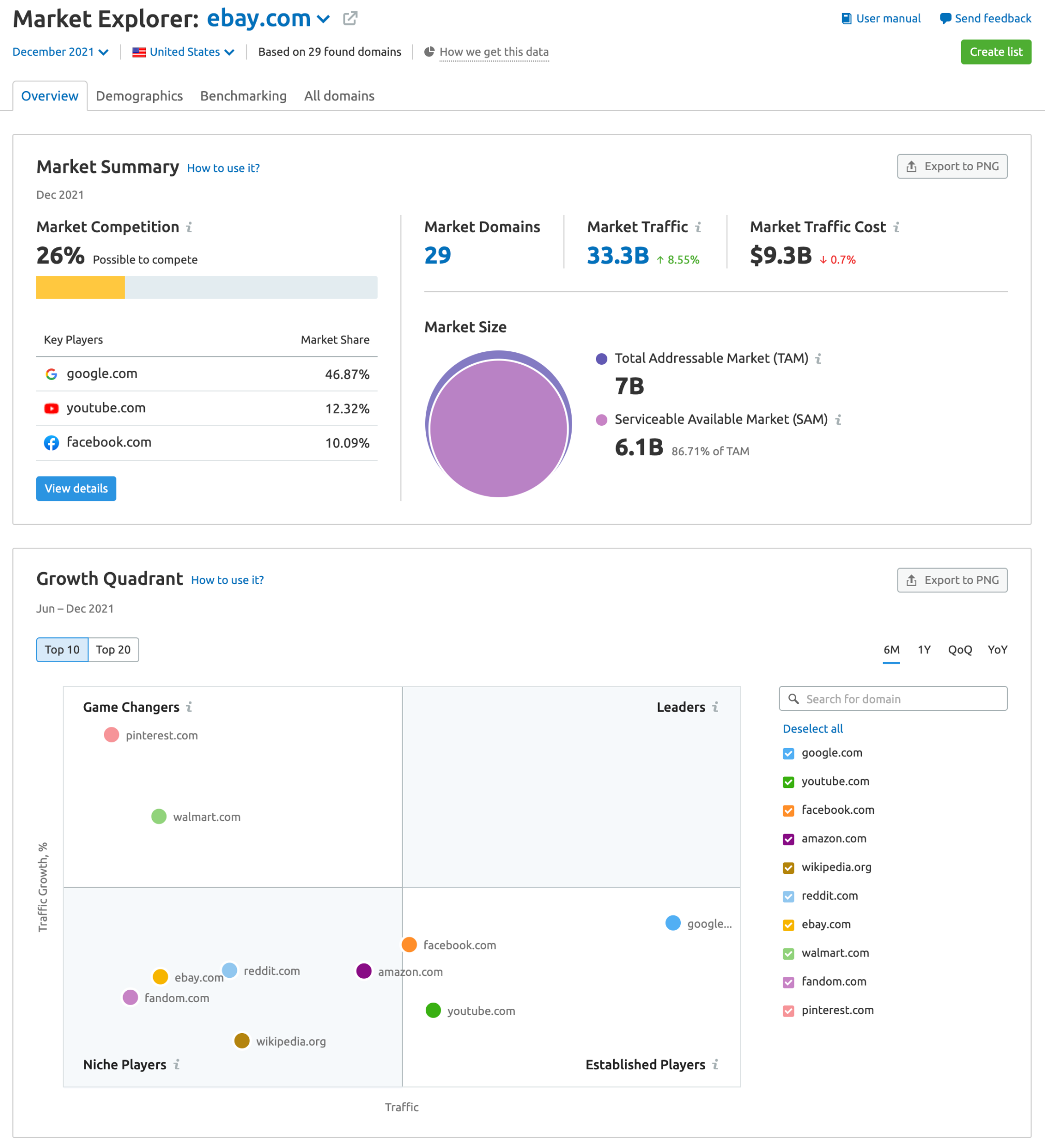
To find out who you’re competing with for a specific keyword, turn to the Keyword Overview tool for SERP Analysis.
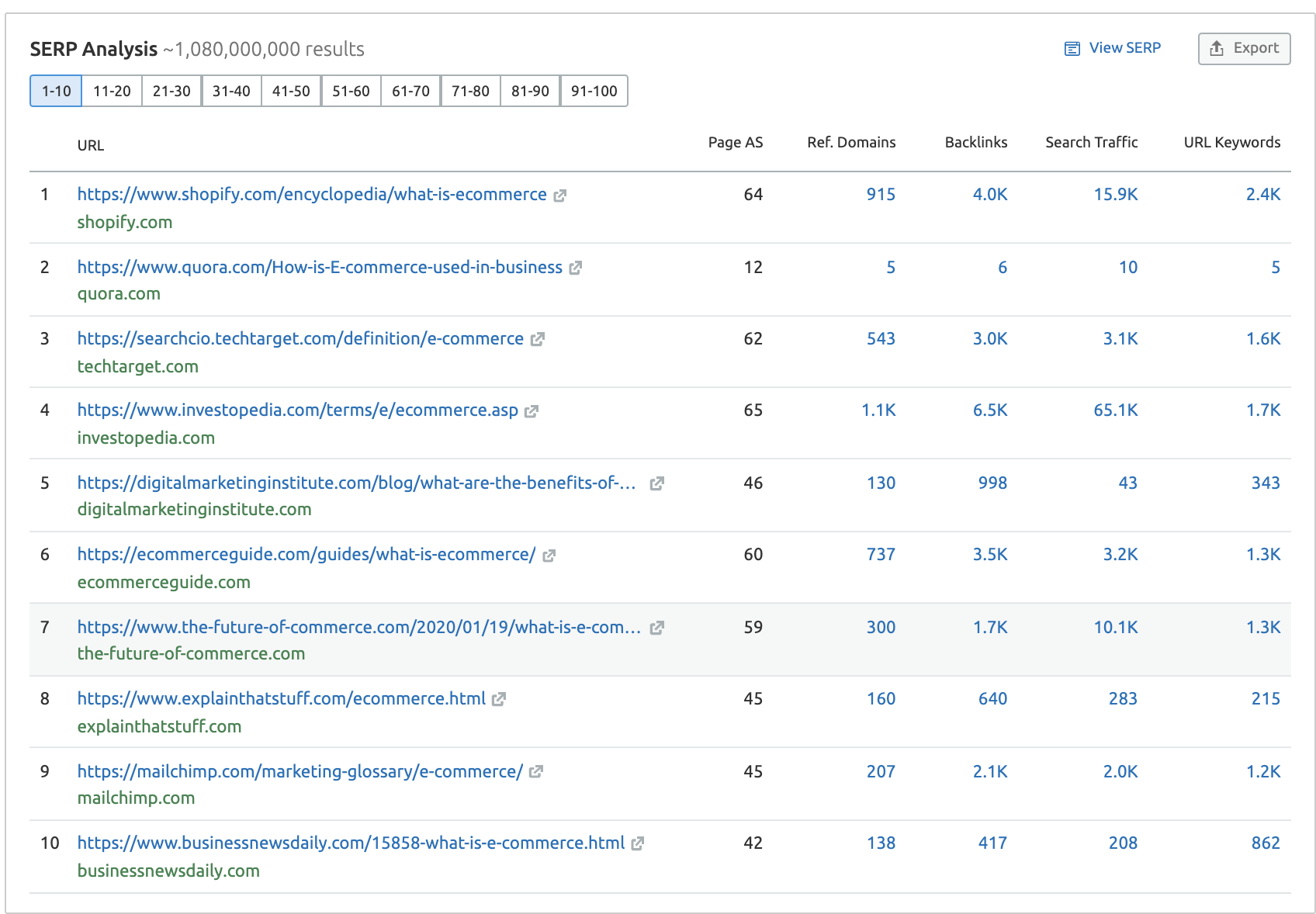
Here, you’ll not only get a snapshot of who’s currently ranking. You can also compare page authority, the number of referring domains pointing their way, and their search traffic. You can review these pages to learn what the most successful content looks like.
Finally, use the Domain Overview tool to study any new competitors you find that you haven’t already researched.

Use what you learn to build a more effective content strategy that satisfies your audience while setting your brand apart.
Content Quality
You’re not going to rank without creating quality content. It’s as simple as that.
But what is quality content?
To answer this, take a look at Google’s mission statement.
We believe Search should deliver the most relevant and reliable information available.
That means that above all, you should strive to deliver content that’s not only relevant to your audience’s needs but also trustworthy and engaging. Then optimize that content so that Google can find, understand, and deliver it to your readers when they need it.
Here’s how it works:
- Do keyword research to find out what your audience wants to know and how they’re searching for it. Make sure the topic is relevant to your brand and your audience’s needs.
- Create an article that answers those questions in a clear, comprehensive, and engaging way. Ensure that the writing is fluent and engaging and that the information is correct and up-to-date.
- Optimize your copy. Use headers so it’s easy to follow and easy for search engines to understand. Use supporting keywords to help search engines read your content and to ensure you’re using similar language to your audience.
- Add clear, descriptive alt text to any supporting images. Be sure to provide context for those images as well so that your article is accessible to people using screen readers.
Want to learn more? Read this article about how the experts measure content quality on our blog.
Search Intent
Unfortunately, it’s not enough to write good content. If you want Google to rank it or your audience to click on it, it also has to be the right content. That’s where search intent comes in.
Search intent refers to the type of content a searcher is looking for when entering a keyword. There are four different types:
- Informational: The user wants to educate themselves on a topic
- Commercial: The user is researching before making a purchase decision
- Transactional: The user wants to buy something
- Navigational: The user wants to find a specific page
You can find a keyword’s search intent in two ways.
First, you can enter the keyword into Google and look at the results.
Are most of the results reference items, like blog posts? Or are there product pages? What types of SERP features are present? By studying the results, you can determine how Google interprets the search intent.
Or you can save a bit of time and use our Keyword Intent metric, which is available in most tools that show keyword data. Here’s where you can find it in the Keyword Magic Tool:
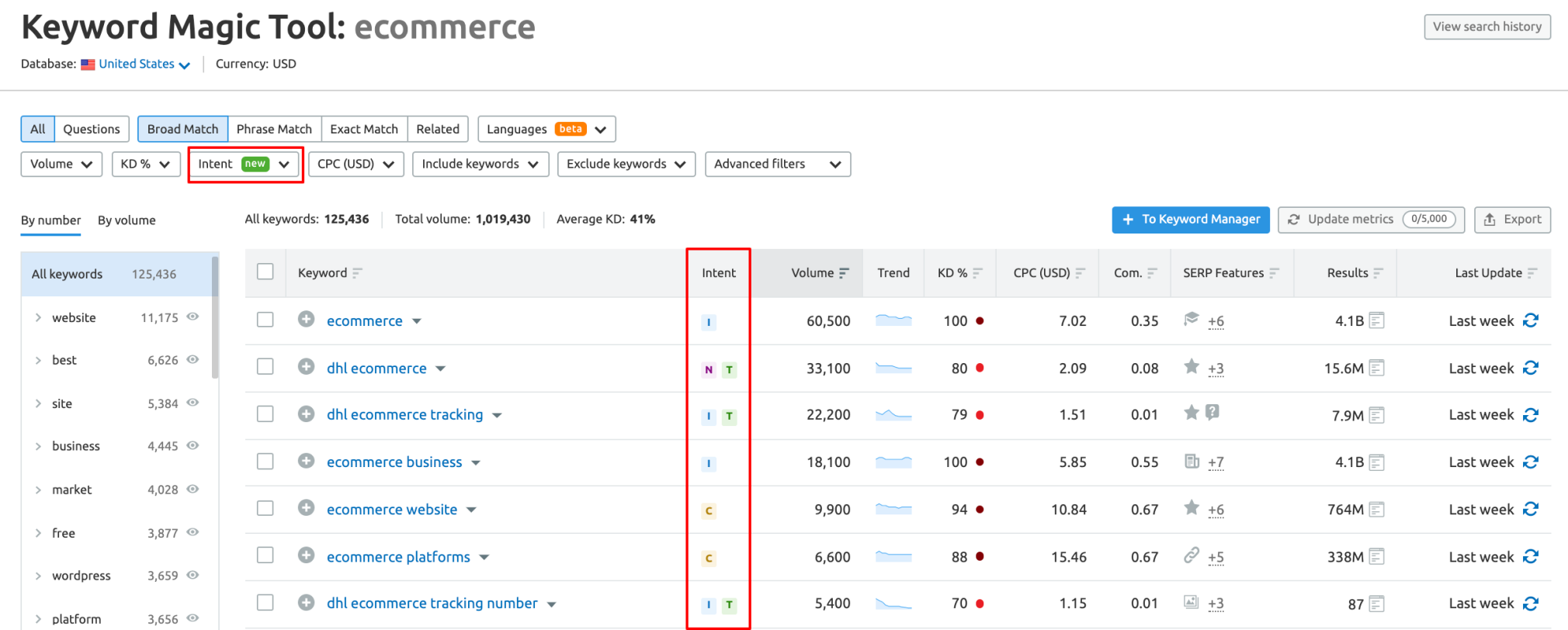
As you create content for your site, make sure it aligns with the intent behind the keywords you’re targeting. Even if you write about the right topic, if you provide the wrong type of information, you’ll have a much more difficult time getting that page to rank.
Backlink Quality
While Google’s ranking factors have evolved over time, the presence and quality of backlinks are still an important consideration for SEO. Google says as much in their support article on how search algorithms work.
Quality backlinks—that is, inbound links that come from authoritative sources—tell search engines like Google that your content is likely to be trustworthy. This helps to build your domain’s authority.
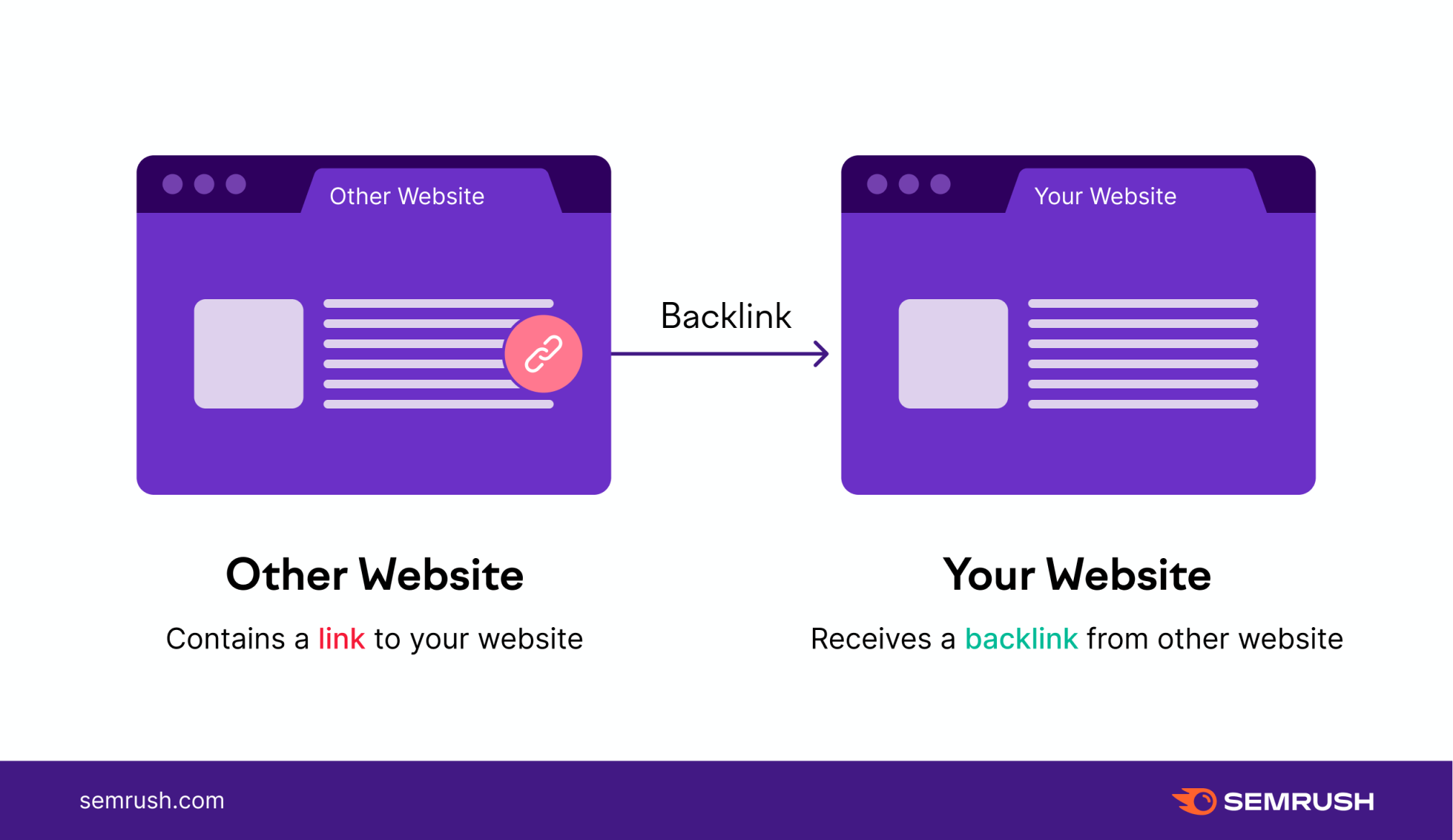
But what does all this have to do with keyword difficulty? Simple. If your top search competitors for a keyword all have strong backlink profiles, it will be much more difficult for a new page to unseat them.
However, this works both ways. If you want new content to rank, map out a link building strategy to grow its authority over time. And for content that already ranks, building and maintaining a solid backlink profile can help you stay on top.
Domain Authority
The truth is that a new domain will struggle to rank for competitive keywords at first. It takes time to build up the authority you need to conquer the SERPs—especially when the competition is already established as an authority in your space.
Domain authority impacts keyword difficulty in two ways:
- Your own: If your website is brand new or has low authority, it will be more difficult to show search engines that your content is better and more reliable than the competition.
- Your competition: If your main competitors for a keyword are well established with high authority, it will be even harder to unseat them from the top spots.
You can evaluate domain authority objectively with the Semrush Authority Score. The Authority Score is a compound metric that assesses the overall quality of a domain. Read more about how to calculate it on our blog.
You can find it in the Domain Overview tool:

Just enter a domain you’d like to learn about and click Search.
Now take a look at how your domain stacks up against the ones currently ranking for the keywords you want to target. If their scores are a lot higher, you might want to spend time increasing your own domain authority.
If you have a Guru account or above, you can also navigate to the Compare Domains tab to view side-by-side results.
Lucky for you, if you’ve already got a plan in place for creating quality content and link building, you’re well on your way to doing just that.
How to Use Semrush to Understand Keyword Difficulty
With Semrush, you can understand a keyword’s relative difficulty using the Keyword Difficulty Score metric (KD%). It’s displayed as a percentage, ranging from zero to 100. A score of zero means that a keyword would be very easy to rank for, whereas 100 is the most difficult.
To calculate a keyword’s difficulty, Semrush looks at the authority of the pages currently ranking, the amount and quality of their backlinks (including their follow/nofollow ratio), as well as other keyword-specific data.
This is how the scores break down:
|
Score |
Meaning |
|
0-14: Very easy. |
These keywords may be good to target if you want to rank as soon as possible with the least amount of effort. However, make sure you double-check the search volume before you decide to target them, as it can sometimes be quite low. |
|
15-29: Easy. |
These are still relatively achievable, even if your domain is new. To rank for these, you’ll need to produce quality, relevant content. |
|
30-49: Possible. |
For these keywords, you’ll need quality content that’s not only well optimized for your target keywords but is also very well organized, with good structure. |
|
50-69: Difficult. |
In addition to producing quality, well-structured content and optimizing it, you’ll need some quality backlinks to win these keywords. |
|
70-84: Hard. |
If you want to win these, you’ll need to put in a lot of effort. You’ll need more and better quality backlinks to support your content. |
|
85-100 = Very hard. |
The absolute hardest keywords to compete for. In addition to high-quality content and link building, you’ll need to put a lot of time and effort into SEO and content promotion. |
Consider these scores during every step of your keyword research process.
Here’s how it works.
Let’s say you want to write more blog posts, but you’re still in the ideation stage. You’re not sure which keywords you want to target, but you want to create quality content that draws readers to your site.
Start with the Keyword Magic Tool. Enter a seed keyword representing a topic you want to write about. This will generate a comprehensive list of keywords you could target, along with a ton of data to help you make your keyword list. You can check keyword difficulty for each keyword in the KD% column.
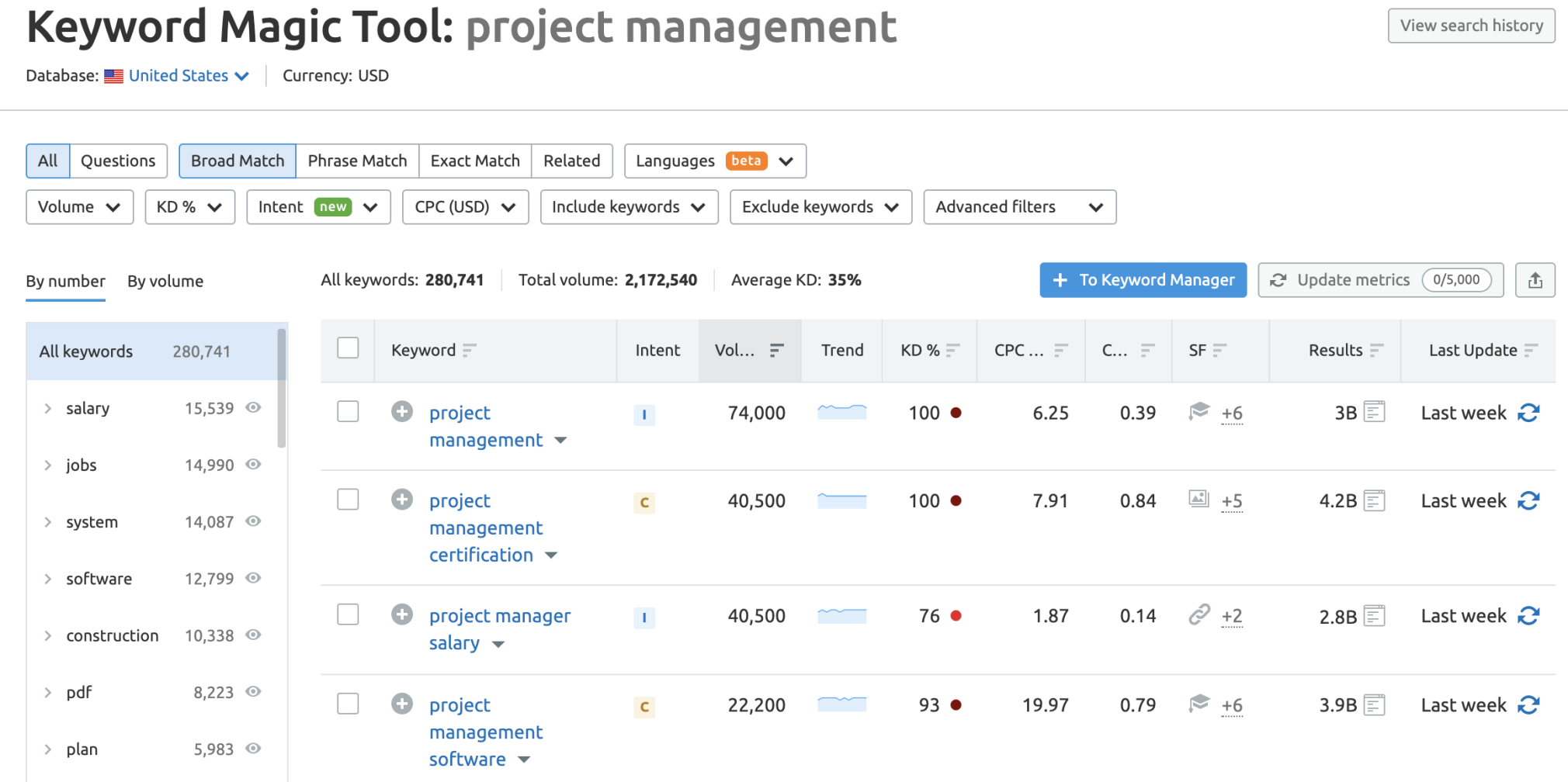
As you choose your keywords, consider:
- Is the topic relevant to my audience?
- How high is the search volume?
- How difficult is this keyword to win?
- Does the search intent align with my goals?
- How competitive is this keyword?
- Are there SERP features I want to target?
Answering these questions will help you identify relevant, impactful, and achievable keywords.
Once you’ve picked a keyword to target, enter it into the Keyword Overview Tool to investigate further. You can enter up to 100 keywords at once.
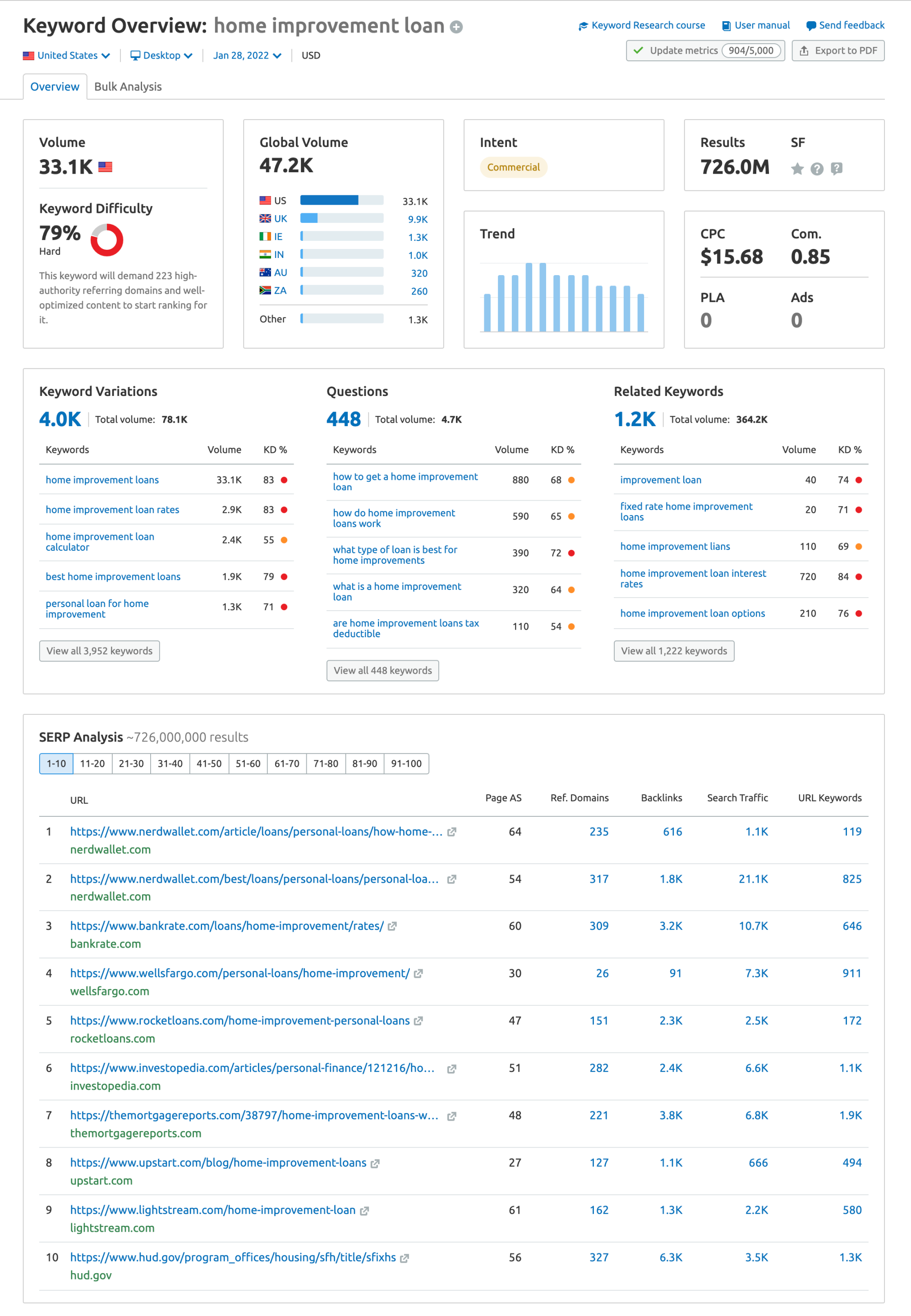
Here, you can get a more comprehensive understanding of your article’s overall level of difficulty. You can find:
- More details about the KD%, including what you’d need to do to win
- Top related keywords, questions and variations, and their KD%
- Other keyword data including search intent, volume, SERP features, and CPC
- A SERP analysis gives you data on who’s currently ranking, their Authority Scores, Traffic, and backlink and keyword profiles
Using this data, you can make an educated decision about whether you want to target this keyword. If you decide to move forward with it, the competitive research and supporting keywords you find here can help you structure your article.
Pro tip: Always consider keyword difficulty in the context of your domain. Depending on your domain’s Authority Score, a keyword might be easier or harder for you than the KD% suggests.
What Is a Good Keyword Difficulty Score?
Ultimately, to know what a good keyword difficulty score is, you first must know your site. If you’re running a high-authority domain, you may have the potential to win more difficult keywords more easily. In that case, it might be worth the effort to target high-difficulty search terms.
Conversely, if you’re running a brand new site, deciding whether to target the most difficult search terms might not be so clear-cut. In some cases, it might be a wiser strategy to avoid the most difficult keywords for now and instead target easier ones and build up your authority over time.
However, if the most difficult keywords are also foundational to your business, you might instead decide it’s worth the extra effort to target them, even if it takes longer to rank.
Let’s say you work at a car dealership that offers auto repairs. You should have a landing page for your service center even if auto repair-related keywords in your area have high difficulty.
So, then, how do you go about choosing keywords based on their difficulty?
- Understand that SEO is a long-term game. Even if a keyword seems out of reach right now, that doesn’t mean you should ignore difficult-to-rank keywords altogether. You just need to accept that it will take time to win them. Instead, continue to analyze your own authority against the sites and webpages that currently rank for those coveted keywords and build them into a more long-term strategy.
- Smart strategies balance easy-to-rank-for keywords with difficult ones. We get that you need to start showing progress, so it makes sense to balance lower-difficulty keywords with those that will take time to earn visibility. Building out topic clusters is a great way to do this. Target broader terms that have a higher Keyword Difficulty Score with your pillar pages and lower scores with your cluster content.
What Is an Easy Keyword Difficulty Score?
Objectively speaking, an easy keyword difficulty score ranges from 0-29. However, as with “good” keyword difficulty scores, the answer can vary in practice.
For example, if your domain is regarded as a major subject matter authority in your space, you’ll have a much easier time ranking for keywords that might be too difficult for up-and-coming sites. In that case, an “easy” keyword difficulty score for you might be hard for someone else.
When evaluating how easy or difficult a keyword is, consider both its KD% and your own experience.
How Do Long Tail Keywords Impact Keyword Difficulty?
Long tail keywords are longer phrases that usually have lower search volume and lower competition levels. Because they’re less competitive, they’re more likely to have higher conversion rates as well.
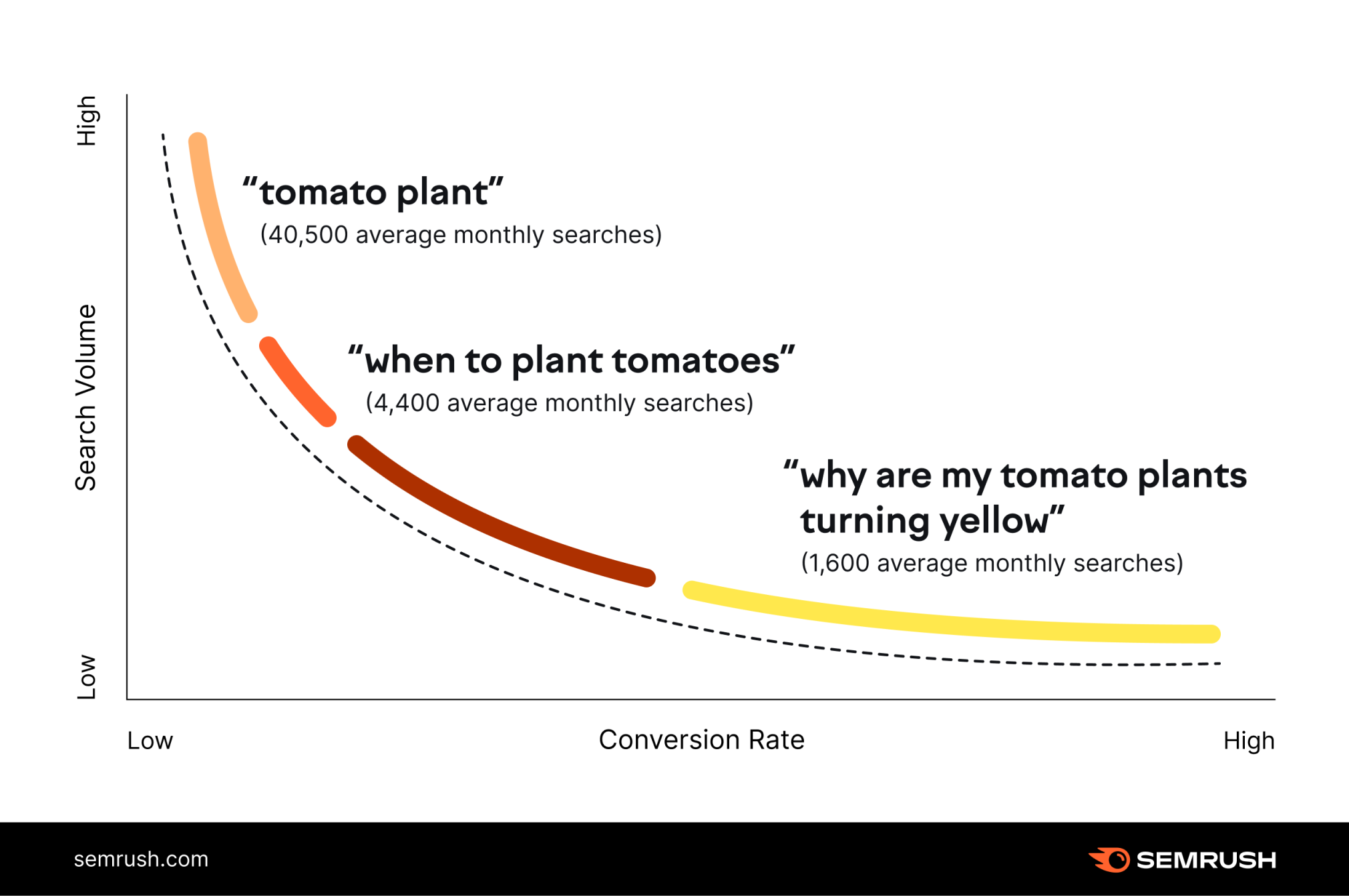
Let’s revisit the auto repairs example from above—your local dealership may have a tough time ranking for “oil changes”, but will fare much better targeting “oil changes in scottsdale”.
So even if you get less overall traffic, you’re far more likely to get relevant traffic (i.e., people actually looking for oil changes in Scottsdale in this example).
From a user’s perspective, they’re trying to find the most specific answer to their question. If someone typed in “tomato plan”, they would get pretty general results in the SERPs.
But if they typed in “why are my tomato plants turning yellow”, they would get a much more specific result.
Final Thoughts
Don’t make the mistake of basing your keyword research on search volume alone.
When you do this, you’ll struggle to set realistic expectations or estimate the time and resources needed to succeed.
Take the time to understand how feasible it is to rank for the keywords you want, find quick win opportunities (lower difficulty, higher-value keywords), and get buy-in for your strategy based on solid but realistic projections.
Use the Keyword Difficulty Score as a guide, and combine this with insights on your own domain’s authority and ability to rank to put in place a roadmap of actions that sets you up for growth.
There are plenty of keyword research tools to try out to get started!

